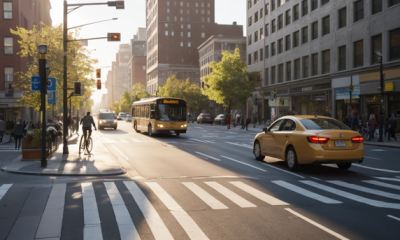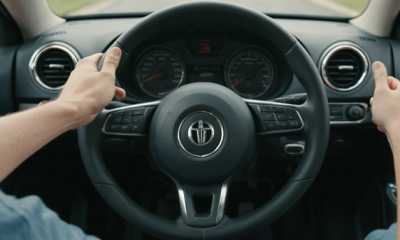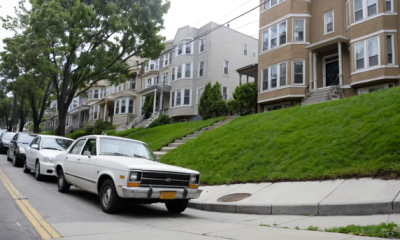Driving Tips
Safe Driving Tips In Heavy Fog – Stay Smart, Drive Confident

Safe driving tips in heavy fog you need to know! Learn how to stay visible, alert, and in control during foggy road conditions.
Safe Driving Tips in Heavy Fog 🌫️
Ever driven into a wall of thick fog and felt like you were suddenly in a suspense movie? 😰
That eerie whiteness, limited visibility, and nerve-wracking silence—it’s no joke.
Driving in heavy fog is one of the most dangerous road conditions.
But here’s the good news: with the right techniques and awareness, you can drive safely—even when you can’t see more than a few feet ahead.
This guide is packed with practical, no-fluff tips for staying safe when the fog rolls in. Whether you’re commuting, traveling, or just caught off guard—you’ll know exactly what to do.
Understand the Danger of Driving in Fog ☁️
Heavy fog drastically reduces visibility. That’s obvious, right? But it’s not just about what you can’t see.
It’s about:
- How far ahead you can react
- How much time you give others to see you
- Your ability to judge distance and speed
Most fog-related accidents happen because drivers go too fast for conditions or don’t realize how close they are to another car.
👉 Fog plays tricks on your brain—slow down, stay focused, and don’t trust your eyes alone.
Turn On Your Low Beams 🔆
Always use low beam headlights in fog, not high beams. Why?
- High beams reflect off fog and make visibility worse
- Low beams aim downward and reduce glare
- They help other drivers see you without blinding them
💡 If your vehicle has fog lights, use them too—but only if conditions call for it.
Don’t Use Hazard Lights While Moving 🚫
This might surprise you: hazard lights are for stopped vehicles, not for driving in fog.
Here’s why they’re dangerous while moving:
- They confuse other drivers
- They make it hard to know if you’re stopped or not
- They reduce clarity during turns or lane changes
Instead, keep your headlights on, stay in your lane, and use turn signals as needed.
Slow Down and Increase Following Distance 🐢
Speed kills in fog. It’s that simple.
Even if you’re familiar with the road, fog hides curves, lights, and brake signals. You need more time to react.
Do this instead:
- Drop your speed significantly
- Double your following distance (at least 5 seconds behind the car ahead)
- Be ready to stop without slamming the brakes
🧠 Your goal: drive slow enough to stop within the distance you can clearly see.
❗ Visibility Distance vs. Safe Speed
| Visibility Range | Recommended Speed |
|---|---|
| Over 500 ft | Normal highway speed (if dry) |
| 200–500 ft | 45–55 mph |
| 100–200 ft | 30–40 mph |
| Under 100 ft | 20–25 mph max |
👀 The less you see, the slower you go. It’s that simple.
Use the Right Lane When Possible 🚗
Stick to the right-hand lane on multi-lane roads. Why?
- It’s safer and less congested
- You avoid faster drivers
- Emergency vehicles and faster traffic stay left
If you’re unsure of your surroundings, the right lane gives you more reaction time.
Avoid Sudden Movements or Lane Changes ⚠️
Fog is no time for aggressive driving. Avoid:
- Swerving or switching lanes without clear vision
- Hard braking unless absolutely necessary
- Fast acceleration or deceleration
Smooth is safe. Everything you do should be deliberate and steady.
Use Road Markings to Guide You 🛣️
Can’t see what’s ahead? Look down.
Use the white edge line (fog line) on the right side of the road as your visual guide.
- Don’t rely on the center line
- Stay centered in your lane
- Use reflectors or painted lines to track the road
🌟 This trick helps keep you grounded—even in the thickest fog.
📋 Essential Safety Items to Carry
| Item | Why You Need It |
|---|---|
| Reflective triangles | In case you need to stop roadside |
| LED flashlight | For checking surroundings or signaling |
| Emergency blanket | If stranded, keeps you warm |
| Phone charger | Keep communication lines open |
| First aid kit | Always helpful in roadside emergencies |
🚗 A little preparation goes a long way—especialy in poor visibility.
Don’t Rely on Cruise Control in Fog 🚫
Cruise control is great for long drives—but it’s dangerous in foggy conditions.
It removes your ability to:
- Adjust speed based on real-time visibility
- React quickly to obstacles or hazards
- Keep your full attention on the road
Turn it off and stay in control.
Stay Focused—No Distractions 📵
Fog demands your full attention. Even quick distractions can be deadly.
Put away:
- Cell phones
- Food
- Loud music
- Conversations that take your eyes off the road
🧠 Your eyes and mind should stay locked on what little you can see.
Use Defrosters and Wipers Properly 🌬️
Fog often comes with moisture. Keep your windows clear so you’re not adding to the visibility problem.
- Use defrosters to clear the windshield
- Run wipers on low if needed
- Crack a window to reduce interior fog buildup
💧 Fog inside your car is just as dangerous as the fog outside.
Know When to Pull Over and Wait 🛑
Sometimes, the safest choice is not to drive at all.
If visibility drops below 50 feet:
- Find a safe place to pull over
- Use your hazard lights once fully stopped
- Wait for the fog to lift or thin out
- Stay off the shoulder if possible—park in a lot or rest area
🚨 If you can’t see your hood clearly, you shouldn’t be driving.
Stay Alert for Unexpected Hazards 🦌
Fog reduces everyone’s visibility—including animals and pedestrians.
Watch out for:
- Animals crossing the road
- Broken-down vehicles
- Debris or fallen branches
- Drivers without lights on 😤
🧠 Expect the unexpected—specialy in rural or wooded areas.
Plan Ahead Before You Drive 🌤️
The best defense? Don’t get caught in fog in the first place.
Here’s how to prepare:
- Check the weather before you leave
- Know local fog hotspots (rivers, valleys, coastlines)
- Avoid early morning or late-night drives if possible
- Give yourself extra time
⏰ Rushing in fog is a recipe for disaster. Always build in buffer time.
🚘 Safe vs. Risky Behaviors in Fog
| Safe Behavior | Risky Behavior |
|---|---|
| Driving slowly | Speeding to “get through it” |
| Using low beams | Using high beams |
| Keeping distance | Tailgating others |
| Staying in your lane | Constantly changing lanes |
| Pulling over when needed | Pressing on with low visibility |
✅ When in doubt—choose caution over speed.
Final Thoughts 🌫️
Driving in heavy fog isn’t something to take lightly. It’s one of the most unpredictable and risky conditions you’ll face behind the wheel.
Here’s the bottom line:
- Slow down and increase following distance
- Use low beams, not high beams
- Stay in your lane and avoid sudden moves
- Keep your windows clear and attention focused
- Know when to pull over and wait it out
Fog doesn’t last forever. And arriving safely is always better than risking it all.
So next time the mist sets in—drive smart, stay calm, and stay visible. 🙌
❓ FAQs
What headlights should I use in heavy fog?
Always use low beam headlights. High beams reflect off fog and reduce visibility.
How slow should I drive when it’s foggy?
Drive based on visibility. If you can’t see more than 100 feet, keep it under 25 mph.
Is it safe to use cruise control in foggy weather?
No, never use cruise control in fog. You need full control for speed adjustments.
What should I do if the fog gets too thick?
Pull over safely, use your hazard lights, and wait until visibility improves.
Can fog cause accidents even during the day?
Yes, fog is dangerous at any time. It hides road hazards and reduces reaction time.
🔗 References
https://www.nhtsa.gov
https://www.weather.gov/safety/fog
https://exchange.aaa.com/safety/driver-safety-tips/fog/
-

 Auto Parts4 weeks ago
Auto Parts4 weeks agoHow to Identify a Car Part Number Fast – Expert Tips Inside
-

 Driving Tips3 weeks ago
Driving Tips3 weeks agoDefensive Driving Techniques for City Traffic – Proven Smart Tips
-

 Driving Tips2 weeks ago
Driving Tips2 weeks agoHow To Drive A Manual Transmission – Master The Skill Fast!
-

 Driving Tips3 weeks ago
Driving Tips3 weeks agoHow to Parallel Park on a Hill – Master It with Ease Today






